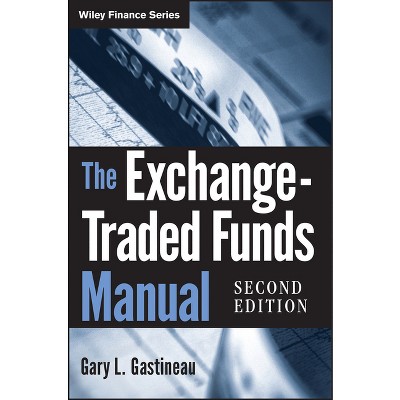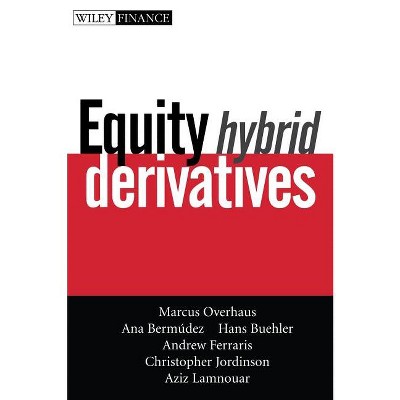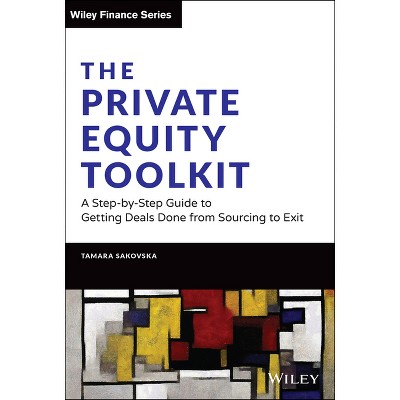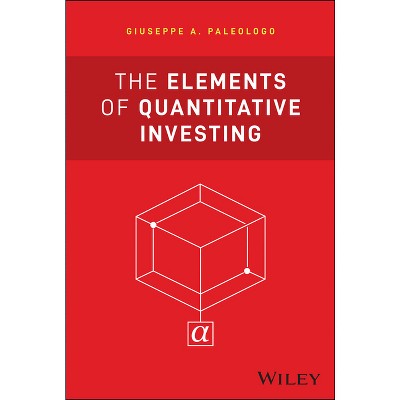Sponsored

The Art of Commitment Pacing - (Wiley Finance) by Thomas Meyer (Hardcover)
In Stock
Sponsored
About this item
Highlights
- Advanced guidance for institutional investors, academics, and researchers on how to manage a portfolio of private capital funds The Art of Commitment Pacing: Engineering Allocations to Private Capital provides a much-needed analysis of the issues that face investors as they incorporate closed ended-funds targeting illiquid private assets (such as private equity, private debt, infrastructure, real estate) into their portfolios.
- About the Author: THOMAS MEYER, is the co-author of Beyond the J Curve (translated into Chinese, Japanese, and Vietnamese), J Curve Exposure, Mastering Illiquidity (all by Wiley), and two CAIA books, which are required reading for Level II of the Chartered Alternative Investment Analyst (R) Program.
- 320 Pages
- Business + Money Management,
- Series Name: Wiley Finance
Description
About the Book
"While many books have been written on private equity, they tend to focus on the exciting aspects of this market -- deals, their structures, the personalities involved, statistics on stellar successes and the occasional spectacular flop. For a long time, due diligence and selection was seen to be everything' but with the market maturing and no shortage of experienced professionals, selection skills have ceased to the driver of investment success. There are still surprisingly few works that look at the processes institutional investors follow and the portfolio and risk management methodologies needed for creating value with illiquid alternative assets. Considering how much money has been flowing into illiquid alternative assets in recent years, the term alternative' increasingly looks like a misnomer. Private assets -- notably private equity, infrastructure, and real-estate -- have become an accepted and even necessary part of an institutional investment portfolio. Historically, allocations to such assets were immaterial and often experimental, and rarely justified developing the portfolio and risk tools that investors would normally rely on when designing and implementing their investment strategies. Today, however, these allocations are no longer immaterial, yet many investors still follow approaches to managing portfolios of illiquid assets that remain relatively unsophisticated and poorly adapted to the task"--Book Synopsis
Advanced guidance for institutional investors, academics, and researchers on how to manage a portfolio of private capital funds
The Art of Commitment Pacing: Engineering Allocations to Private Capital provides a much-needed analysis of the issues that face investors as they incorporate closed ended-funds targeting illiquid private assets (such as private equity, private debt, infrastructure, real estate) into their portfolios. These private capital funds, once considered "alternative" and viewed as experimental, are becoming an increasingly standard component of institutional asset allocations.
However, many investors still follow management approaches that remain anchored in the portfolio theory for liquid assets but that often lead to disappointing results when applied to portfolios of private capital funds where practically investors remain committed over nearly a decade.
When planning for such commitments, investment managers and researchers are faced with practical questions such as:
- How to measure and control the real exposure to private assets?
- How to forecast cash-flows for commitments to private capital funds?
- What ranges for their returns and lifetime are realistic, and how can the investor's skill be factored in?
- Over which dimensions should a portfolio be diversified and how much diversification is enough?
- How can the impact of co-investments or secondaries be modelled?
- How to design pacing plans that lead to resilient and efficient portfolios?
- What stress scenarios should be considered and how can they be applied?
These are just examples of the many questions for which answers are provided. The Art of Commitment Pacing describes established and new methodologies for building up and controlling allocations to such investments. This book offers a systematic approach for building up and controlling allocations to such investments.
The Art of Commitment Pacing is a valuable addition to the libraries of investment managers, as well as portfolio and risk managers involved in institutional investment. The book will also be of interest to advanced students of finance, researchers, and other practitioners who require a detailed understanding of forecasting and portfolio management methodologies.
From the Back Cover
PRAISE FOR
THE ART OF COMMITMENT PACING
"Every institutional investor should read Meyer's The Art of Commitment Pacing, the only book systematically discussing the challenges in allocating to private capital, a lumpy, illiquid, and opaque asset class. Meyer eloquently provides state-of-the-art practical solutions to help asset allocators build up and maintain allocations to private assets. This book is an essential guide to an institutional asset allocator's most important decision."
--Hossein Kazemi, Ph.D., CFA, Philipp Professor of Finance at Isenberg School of Management, Editor of the Journal of Alternative Investments, and Senior Advisor to the CAIA Association and the FDP Institute
"Private markets are now a staple of institutional asset allocations. As a result, fundamental questions have come to the fore that academic literature has fallen short of addressing. Thomas Meyer offers practical solutions, the perfect mix of theoretical and practical insights, in a series of synthetic and accessible chapters for knowledgeable practitioners. This is well-invested time that will pay off over the long term."
--Cyril Demaria, Head of Private Market Strategy at Julius Bär, Affiliate Professor at EDHEC, Author of Asset Allocation and Private Markets, and Introduction to Private Equity, Debt and Real Assets
"This book is a game-changer for investors in private capital, offering unprecedented insights and practical models to master commitment pacing and risk management."
--Jason Scharfman, Managing Partner Corgentum Consulting.
"Thomas has condensed the art and science of commitment pacing into a rigorous yet pragmatic guide, filling a huge gap in the finance literature - a must read for all LPs."
--Andrea Carnelli Dompé, PhD. CEO & Co-founder - Tamarix Technologies
"Commitment pacing is one of the hidden gems in the toolbox of every private equity fund manager. Historically it has lagged in terms of research and literature focus versus fund manager selection or due diligence. Thomas Meyer levels the playing field by focusing on this often overlooked subject. If you want to move from simplistic commitment pacing models to rigorous forecasting in a portfolio of private equity funds, this is a book for you."
--Ignacio Larrú Martínez, General Partner at Kanoar Ventures SGEIC, SA
"With the growing allocation to private equity by Japanese institutional investors, The Art of Commitment Pacing provides a very useful weapon for them to build a sophisticated investment program. We live in a volatile investment environment and managing a private equity portfolio that lacks liquidity is not an easy task. This book helps investors to overcome their challenges."
--Kazushige Kobayashi, Managing Director, MCP Asset Management
"Thomas Meyer delves into the critical risk associated with Private Capital: its inherent illiquidity. Expanding on the concepts introduced in his previous best-selling works, Thomas offers an in-depth exploration of this risk. He provides essential strategies, including commitment pacing, to safeguard institutional investors against potential significant upheavals. This book is an indispensable guide for every investor in private capital looking to optimize their success."
--Pierre-Yves Mathonet, Former Head of Risk, Private Equities Department, Abu Dhabi Investment Authority and former Head of Division, Risk Management, Private Equity, European Investment Fund
About the Author
THOMAS MEYER, is the co-author of Beyond the J Curve (translated into Chinese, Japanese, and Vietnamese), J Curve Exposure, Mastering Illiquidity (all by Wiley), and two CAIA books, which are required reading for Level II of the Chartered Alternative Investment Analyst (R) Program. He authored Private Equity Unchained (by Palgrave MacMillan).
Shipping details
Return details
Guests also viewed








